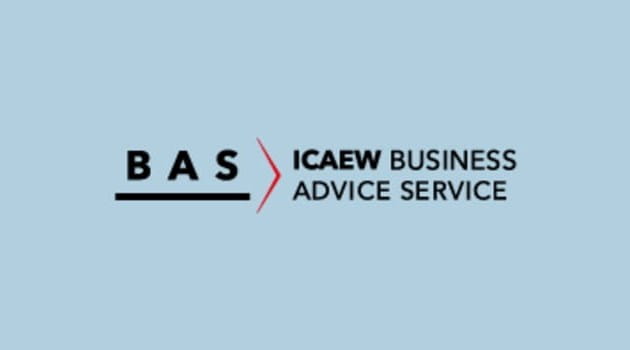Energy has never been more front and centre in our collective minds than since Russia began waging a war in Ukraine, highlighting just how dependent Europe is on Russian gas, and how interdependent global energy markets are.
This autumn, consumers and business owners enjoyed some reprieve when the UK government stepped in with the Energy Bill Relief Scheme to help them with unsustainable energy costs. But this support ends next March even though the hope that energy markets will stabilise by then is fading fast.
Crucially, businesses don’t operate on six-monthly cycles and are already looking ahead to 2023/24. Neither are businesses counting on additional help from the government next March because escalating inflation, rising interest rates and a cost-of-living crisis will give politicians little room for manoeuvre.
Simon Gray, Head of Business at ICAEW, says: “There was nothing in the Autumn Statement to confirm what happens from next April to help businesses with energy costs. For energy-intensive businesses especially, this was unwelcome news. Reviewing contracts and taking steps to reduce demand is good advice, but the latter requires investment.”
With energy expenditure making up between 5-20% of operating costs for roughly half of UK business, improved visibility on energy usage is critical for business owners. More importantly, energy wastage should not be underestimated. Funds spent on wasted energy could be redirected towards pay rises that boost productivity or investments that improve energy sustainability. According to Schneider Electric’s ‘Energy as Currency’ Report, a 30% cut in energy consumption typically equates to a 10% cut in overall operating costs.
“With some worst-case scenarios estimating as much as 36% of a bill is wasted energy, it’s no longer a choice but a necessity for businesses to reduce their energy usage, but there are immediate steps that can lead to significant savings in this area,” says Lindsay Ventress, Global NZT Advisory Ops Manager at carbon reduction strategy consultants EcoAct.
The Energy Savings Opportunity Scheme (ESOS) already requires large organisations to carry out a mandatory assessment of their energy usage every four years and to identify new ways of saving energy. But more regular assessments could save businesses much more.
Simon Geale, Executive Vice-President at supply chain and procurement consultancy Proxima, says: “Current market conditions, as well as the green agenda, are shining a light on just how much wastage there is in the flow from generation to usage. Understanding usage and leveraging that information to change behaviours to be more energy efficient and reduce waste is where the big impact will come from in today’s market.”
Procurement teams should be on top of sources and cost of supply. Those that have bought well historically could be outperforming the current market, which may in some cases be worth millions.
“Procurement teams should think about what they buy and how they work, and run an energy lens through that. They should then work with suppliers and stakeholders to assess the practicality and impact and make those things happen. There are also actions suppliers can take, such as reconfiguring how things are made or done. Some are easier fixes than others, but a broad range of impacts will hold everyone accountable,” Geale says.
Clare King, a partner at Freeths solicitors, agrees that having a proper energy procurement strategy is worthwhile. But she also urges businesses to understand how much other mandatory charges are, including commission. “Procuring energy supply contracts through brokers or third-party intermediaries (TPIs) won’t necessarily lower your energy bills, because commissions (paid by energy suppliers to brokers/TPIs) are often built into the supply contracts.
“If you use a broker or TPI, ask them for a detailed breakdown of costs and charges, including any commissions, so you understand exactly how much you are paying for your energy and other mandatory charges,” King adds.
On-site generation
The installation of on-site energy efficient generation assets such as solar panels, heat pumps, battery energy storage systems or combined heat and power plants, is also gaining traction.
Matthew Clayton, Managing Director at Bristol-based Thrive Renewables, says: “On-site renewable projects offer a viable, long-term solution for many commercial premises looking to better manage their costs. If you have access to good levels of natural resource, for example somewhere with abundant wind, or a large, open space (a car park or rooftop), you could be eligible for solar PV.”
If a company doesn’t have the external space for on-site generation, another alternative could be to buy energy direct from a generator through a corporate power purchase agreement.
“This is becoming increasingly popular in the renewable energy market where businesses buy electricity direct from solar farms or wind farms, securing fixed price energy over a relatively long term and also bolstering their ESG credentials by buying green,” King says.
In a PPA, companies can secure a better price than the market price for around five to 10 years. This offers companies greater budget clarity, but it comes with risks, because if the market prices falls in the future it could result in companies paying over the average cost in a few years’ time.
Gray says: “With many businesses squeezed by increasing costs and falling demand, investment in green technology may not currently be an option. Even if it is an option, the availability of heat pumps, solar and other technologies have been hampered by delays in the supply chain and the availability of a skilled workforce to implement. Now is the time for business to look at all options to secure supply at the right price and reduce demand as much as possible.”
In the first instance, companies must attempt to reduce consumption, improve insulation and reduce wastage. It is likely that companies might be better off having shorter contracts now so they can take advantage when the market price drops. Higher wholesale prices are expected to remain until 2024.
With this in mind, despite the current economic headwinds, businesses should be exploring energy efficiency to become less dependent on grid prices and become more self-sufficient. But critically, it’s mostly about securing liquid supply at the best price.
Visit ICAEW’s Energy Crisis hub for advice on mitigating the negative impacts of rising electricity prices on your business.



